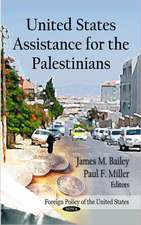China’s Regional Development and Tibet
Autor Rongxing Guoen Limba Engleză Hardback – 27 oct 2015
| Toate formatele și edițiile | Preț | Express |
|---|---|---|
| Paperback (1) | 383.71 lei 6-8 săpt. | |
| Springer Nature Singapore – 23 aug 2016 | 383.71 lei 6-8 săpt. | |
| Hardback (1) | 394.87 lei 3-5 săpt. | |
| Springer Nature Singapore – 27 oct 2015 | 394.87 lei 3-5 săpt. |
Preț: 394.87 lei
Nou
Puncte Express: 592
Preț estimativ în valută:
75.56€ • 79.05$ • 62.77£
75.56€ • 79.05$ • 62.77£
Carte disponibilă
Livrare economică 12-26 martie
Preluare comenzi: 021 569.72.76
Specificații
ISBN-13: 9789812879561
ISBN-10: 9812879560
Pagini: 195
Ilustrații: XXII, 195 p.
Dimensiuni: 155 x 235 x 17 mm
Greutate: 0.58 kg
Ediția:1st ed. 2016
Editura: Springer Nature Singapore
Colecția Springer
Locul publicării:Singapore, Singapore
ISBN-10: 9812879560
Pagini: 195
Ilustrații: XXII, 195 p.
Dimensiuni: 155 x 235 x 17 mm
Greutate: 0.58 kg
Ediția:1st ed. 2016
Editura: Springer Nature Singapore
Colecția Springer
Locul publicării:Singapore, Singapore
Cuprins
A Brief History of Tibet.- Chinese-style Development in Tibet: Narrative.- Tibetan Unrest and the Dalai Lama: Narrative.- Determinants of Spatial (Dis)integration: Analytics.- Going Back to Tibet: Analytic Narrative.- Ethnic Autonomy and Tibet: Policy Options.- Epilogue: Center versus Peripheries.- References.
Recenzii
“This book is thus a welcome addition to the existing body of scholarly literature. It is an interesting and well-researched account on Tibet that academics, journalists, policymakers, and students will find very useful. It will also prove useful for nongovernmental organizations, particularly organizations with an interest in minority rights and protecting minority rights worldwide. … What makes the book even more interesting are the useful maps, tables, graphs, diagrams, and photographs.” (Kunal Mukherjee, Mountain Research and Development, Vol. 36 (4), November, 2016)
Textul de pe ultima copertă
This book pursues both narrative and analytic approaches to better understand China’s spatial economic development and its implications for Tibet. Accordingly, this book focuses on Tibet – an autonomous region in the far west of China – as the subject of an in-depth case study, highlighting its unique geopolitical and socioeconomic features and external and boundary conditions. China’s great diversity in terms of physical geography, resource endowment, political economy, and ethnicity and religion has posed challenges to the studies of spatial and interprovincial issues. Indeed, the Chinese nation is far too huge and spatially diverse to be easily interpreted. The only feasible approach to analyzing it is, therefore, to divide it into smaller geographical elements so as to arrive at better insights into the country’s spatial mechanisms and regional characteristics. In this context, the book combines analytic and narrative approaches.
Caracteristici
Presents key spatial and inter-provincial issues in China Discusses China’s spatial economic development and its implications for Tibet Focuses on Tibet’s unique geopolitical and socioeconomic features and external and boundary conditions Includes supplementary material: sn.pub/extras











